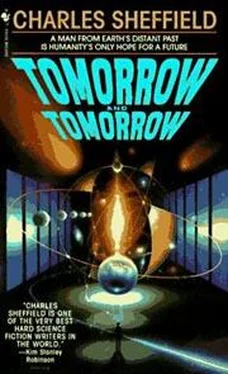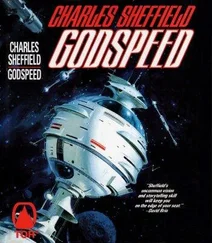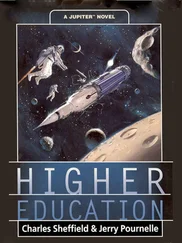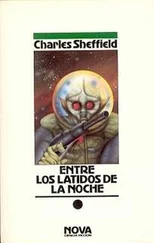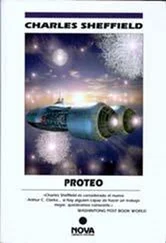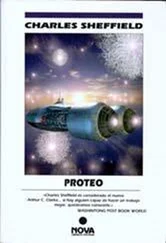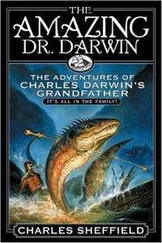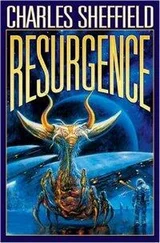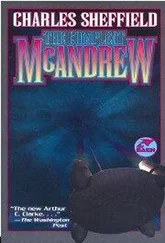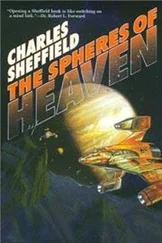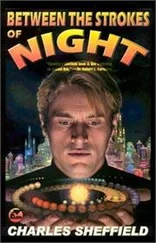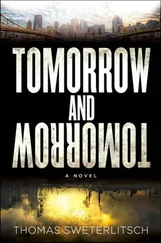Tom Lambert was adding to Drake’s perplexity. He could imagine that the composite might have problems; but the composite must also possess overwhelming capabilities and resources. Drake could not see how his own resurrection and involvement would change anything. If he had been a living fossil long ago, he was far more of one now.
“I don’t understand what your problem has to do with me, Tom. And I don’t see what I have to do with it. But I think you’d better tell me about it.”
“I intend to. And believe me, it is a problem, the very devil of a problem, nothing to do with you or Ana. We have gone beyond desperation. I’ll be honest, you are our last hope, and a long shot it is. A damned long shot. We need a new thought. Or maybe an old thought.” Tom’s mouth trembled, and the fingers holding his pipe writhed. On the fringes of Drake’s mind he heard again the cry and yammer of countless terrified souls. He suppressed them ruthlessly, building a gate in his own consciousness that admitted only the calmest components.
“Thanks. That’s a lot better.” Tom took the pipe from his mouth and laid it down on the broad window-sill. He rummaged in his pocket for his tobacco pouch. Drake noted, with no surprise, that it was a black leather one given to him by Ana.
“Might be a good thing if I show you directly,” Tom continued, as he filled and tamped his pipe. “Let you see for yourself, eh? You know the old advice that Professor Bonvissuto drilled into your head: Don’t tell, show.”
“Do it any way you like. I’ll let you know soon enough if I can’t take it.”
“Fine. I’m going to begin with the solar system. It is relevant, even though you may think at first that it isn’t. Hold on to your hat, Drake. And hey, presto.” Tom clapped his hands. The inside lights turned off. The scene beyond the picture window changed. The Bay of Naples had gone. Suddenly it was dark outside, with no hint of sea or sky. The room hovered on the edge of a bleak and endless void, lit only by glittering stars.
As Drake stared, the scene began to move smoothly to the right, as though the whole room was turning in space. A huge globe came into view. It was bloated and orange red, its glowing surface mottled with darker spots.
“The Sun,” Tom Lambert said simply.
Drake stared at the dull and gigantic orb. “You mean, the Sun as it is today?”
“That’s right. Real time presentation. Of course, we’re not as close as it looks. That’s as seen through an imaging system. But you’re looking at Sol, the genuine article, with realistic colors and surface features.”
Sol transformed — by nature, or human activities?
“Did you make it that way?”
“Not at all.” Tom was lighting his pipe again, and his presence was revealed only by a dull red glow that waxed and waned. “We could have done it, but we didn’t. Natural stellar evolution made the change.”
Sol had been transformed by time, from the warm star that Drake had known into a brooding stranger. He had learned enough over the millennia to understand some of the implications. Tom Lambert had answered one of Drake’s questions without saying a word. The change of the Sun from the G-2 dwarf star of their own day to a red giant required five billion years or more of stellar evolution. Sol had now depleted most of its store of hydrogen, and was relying for energy on the fusion of helium and heavier elements.
“What happened to the planets? I don’t see them at all.”
“Not enough natural reflected light. But I can highlight them for you.” The field of view changed as Tom spoke, backing off from the Sun. Brighter flashes of light appeared on each side of the glowing ball of orange. “That’s Jupiter.” One light began to blink more urgently. “And that’s Saturn, and Uranus, and Neptune.”
“Uranus used to have its own fusion reaction. Jupiter, too.”
The glowing pipe bowl moved in the darkness, as Tom shook his head. “Long gone. Those couldn’t be more than short-term fixes, given the limited fusion materials.”
“What about the inner planets? What about Earth? Can you show me them?”
“No. Sol’s red giant phase is a hundred times its old radius, two thousand times the old luminosity. If Earth had remained in its original orbit it would have been incinerated, just like Venus. Mercury was swallowed up completely. Don’t worry about Earth, though, it still exists. The singularity sphere has been removed, and it is more like the Earth that you knew of old. But it was moved far away, along with Mars. There’s no point in looking for it” — Drake had unconsciously been turning his head to scan the sky — “you’ll never see it from our present location. If you like I can show you the Moon. We left that behind.”
Far away. How far away? What would a human (if there were still such a thing as a living, flesh-and-blood human) see today, looking upward from the surface of that distant Earth?
“ ‘I had a dream which was not all a dream.’ ” Drake muttered the words as they welled up in his mind. ” ‘The bright sun was extinguished, and the stars did wander darkling in the eternal space, rayless, and pathless, and the icy earth swung blind and blackening in the moonless air.’ ”
“Sorry?” Tom’s voice was puzzled. “I don’t quite grasp what you’re getting at.”
“Not my thoughts. Those of a writer dead before we were born. Don’t worry about me, Tom, I’m not losing it. Let’s keep going.”
“Axe you sure? I don’t want to overload you again. Remember, this is only our first session.”
“I can take it. Go ahead.”
“If you say so. I wanted to start close to home, give you the local perspective, so to speak, then move us out bit by bit. So here we go again.”
Sol began to shrink. The room that Drake was sitting in backed away into space and lifted high above the ecliptic. Sol became a tiny disk. The highlighted flicker of the outer planets moved in to merge with it and become a single point.
The apparent distance to Sol was increasing. In another half minute the inner region of the diffuse globe of the Oort Cloud was visible. Billions of separate and faint points of light were smeared by distance to a glowing haze. “Every one has been highlighted for the display,” Tom said casually. “Have to do it that way, or you wouldn’t see a thing. Not much sunlight so far out. And of course we’ve been showing just the inhabited bodies. What you might call the ‘old’ solar system colonies, before the spread outward really began. Wanted you to see that, but now if you don’t mind, I’m going to pick up the pace a bit. Don’t want to take all day.”
The outward movement accelerated, accompanied by Tom Lambert’s apparently offhand commentary (Drake realized that the composite speaking through Tom was actually anything but casual; it was his own needs, structuring the form of the input). The whole Oort Cloud was seen briefly, then in turn it shrank rapidly with distance from huge globe to small disk to tiny point of light. Other stars with inhabited planets, or planet-sized free space habitats, appeared as fiery sparks of blue-white and magenta.
At last the whole galactic spiral arm came into view. It was filled with the flashing lights of occupied worlds. The
interarm gaps showed no more than a sparse scattering of points, but across those gulfs the Sagittarius and Perseus arms were as densely populated as the local Orion arm. Finally the whole disk of the Galaxy was visible. The colored flecks of light were everywhere, from the dense galactic center to its wispy outer fringes. Humans and their creations spanned the Galaxy.
The display froze at last.
“In all our forms,” Tom said, “we endured. More than endured: prospered. That’s the way things stood, just one-tenth of a galactic revolution ago — twenty-five million years, in the old terms of time. Development, by organic, inorganic, and composite forms, had been steady and peaceful through thirty full revolutions of the Sun about the galactic center. Pretty impressive, eh?”
Читать дальше
